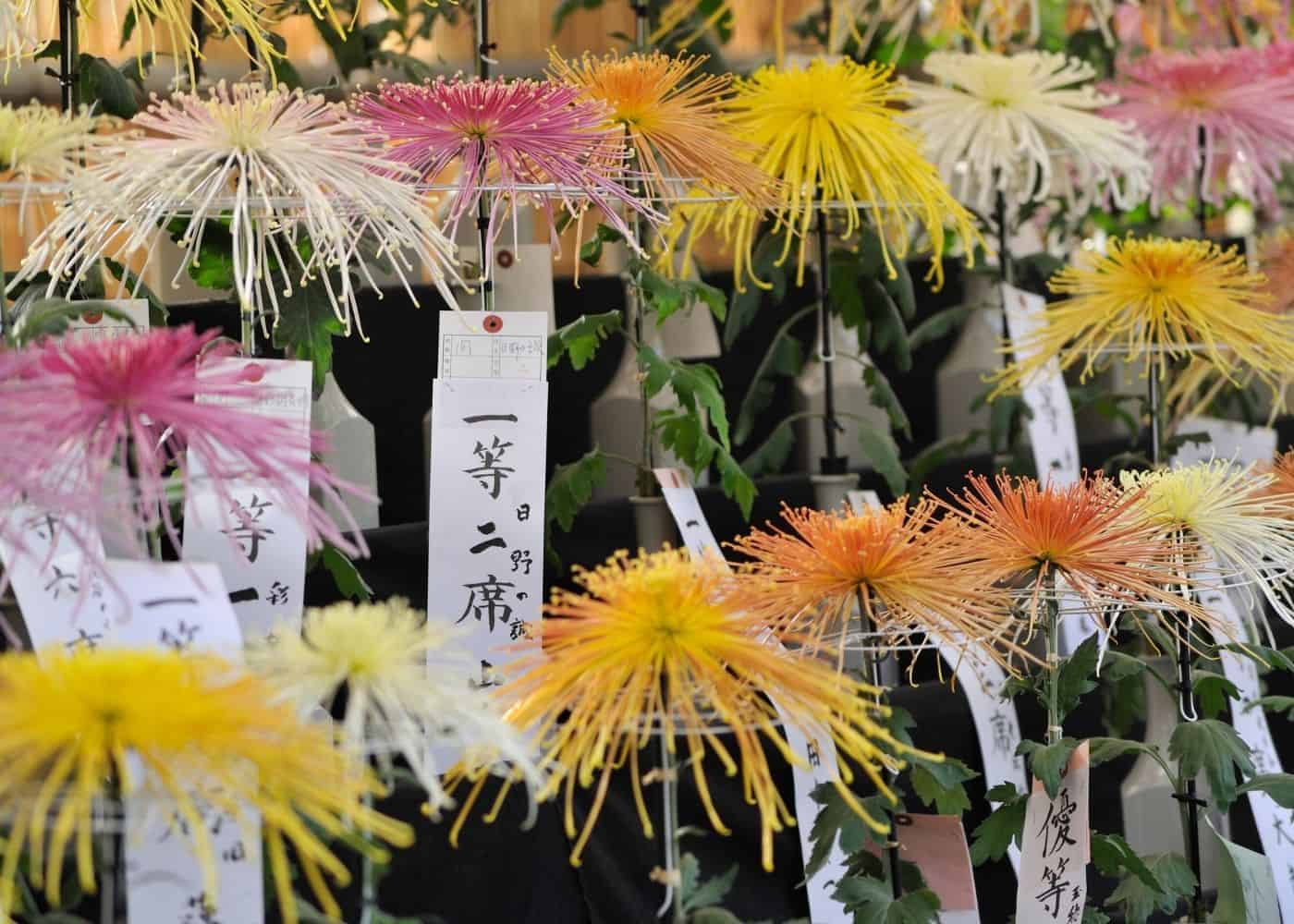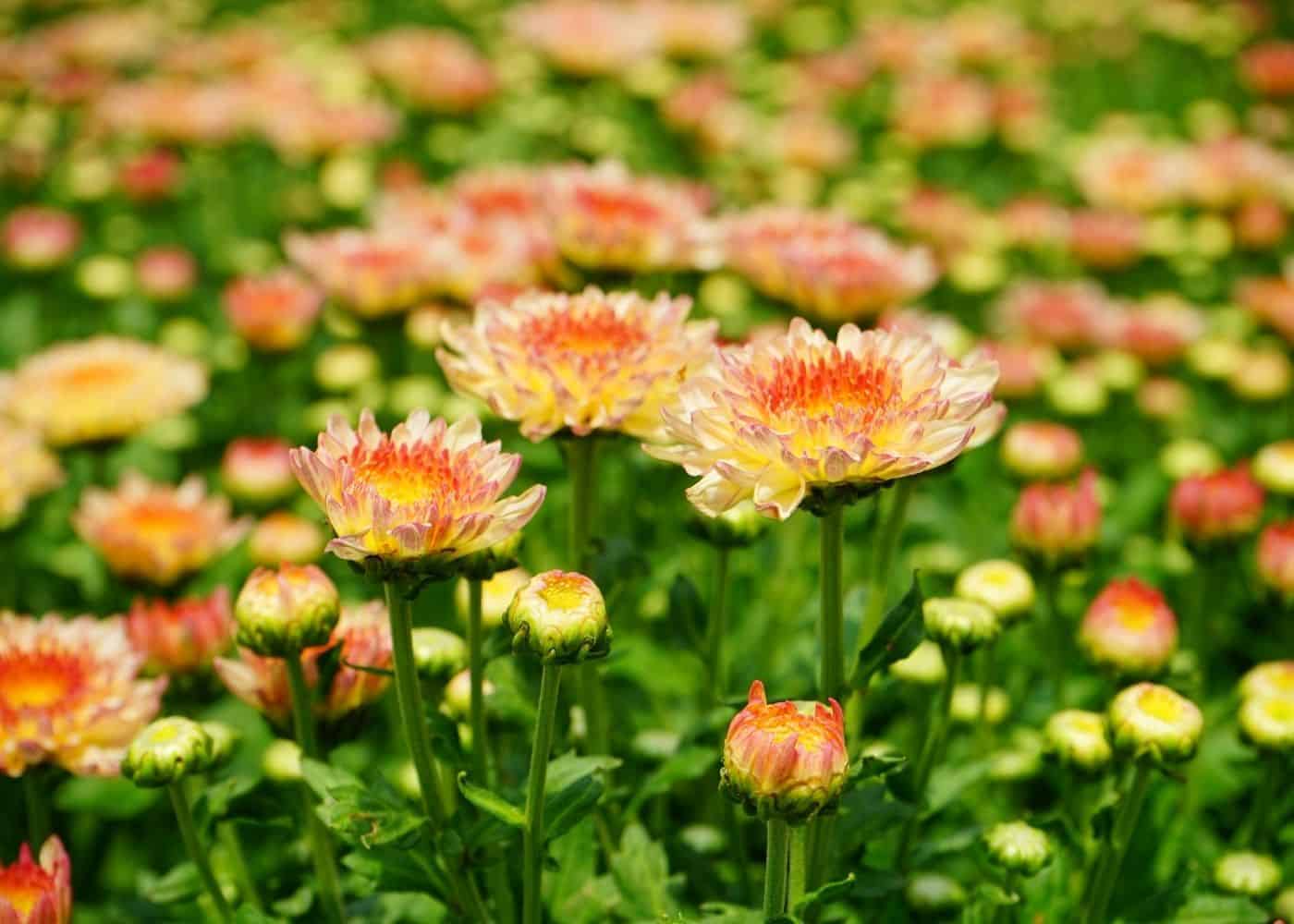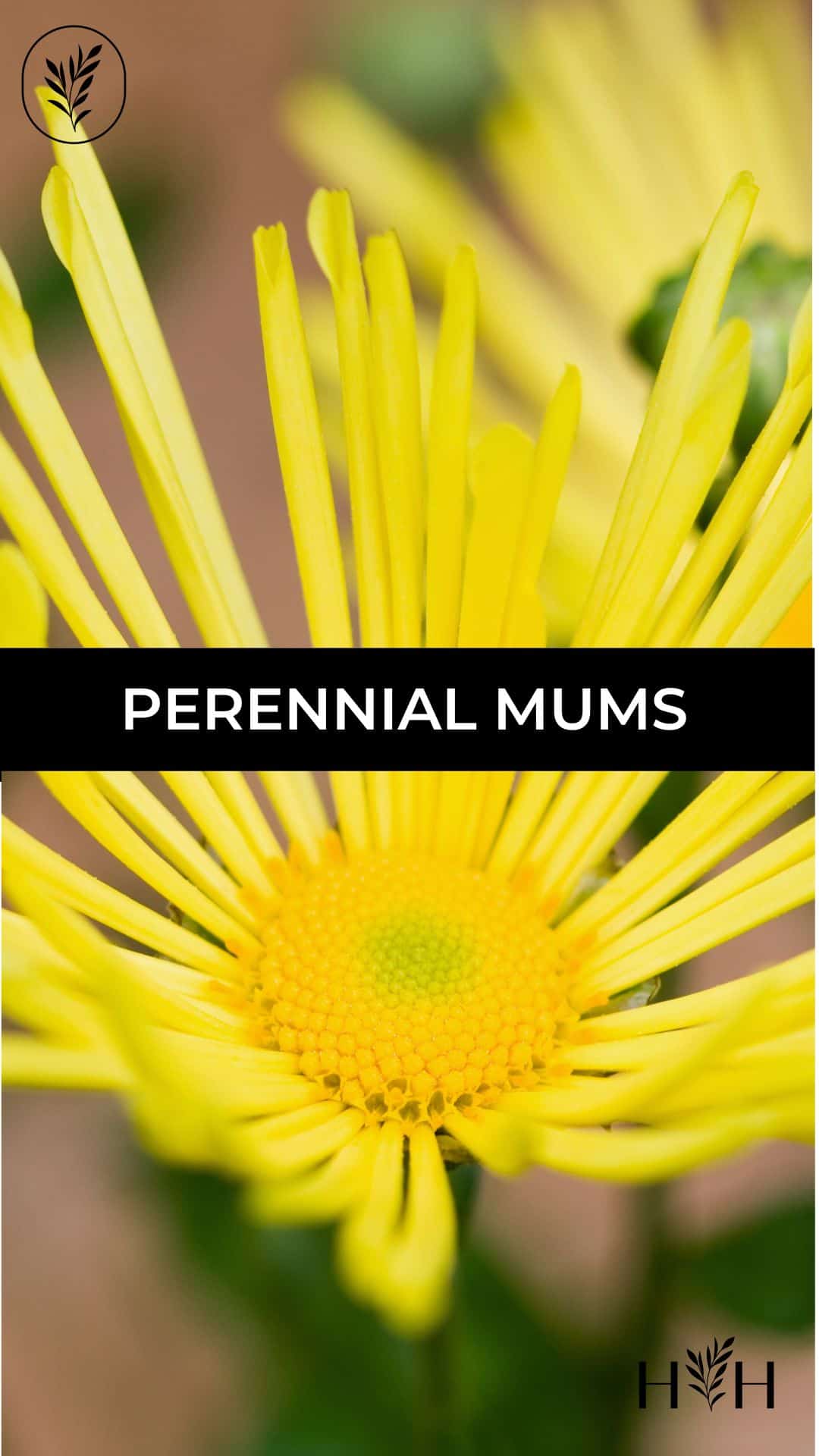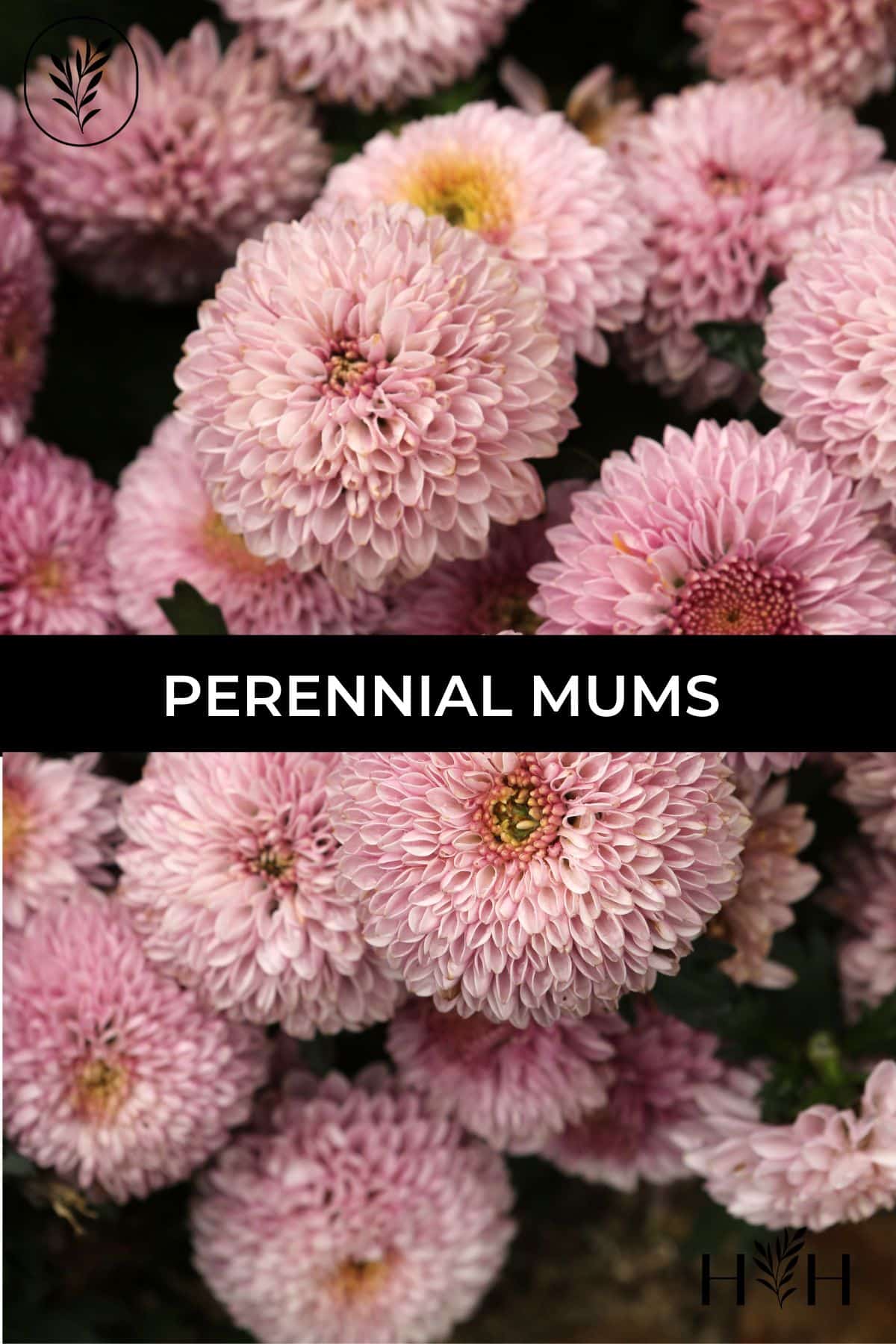Perennial mums are long-lived garden plants that bloom every fall in the flower garden. A wide range of species, flower forms, and colors are available to choose from. Perennial mums are best planted in the spring, giving the plants time to root into the surrounding soil before blooming. Mums purchased and planted in the fall may not have time to develop a sufficient root system to survive the winter.
The basics of perennial mums
Perennial Mums, also known as Chrysanthemums, are long-lived perennial flowers in the daisy family that originated in China. There are 13 flower-type categories and hundreds of varieties. Perennial Mums come in all sorts of colors such as red, orange, yellow, white, pink, lavender, and bronze.
While Mums are perennial in their native climate, only some varieties can survive the cold temperature of colder climate areas of North America. Popular long-lived Perennial Mums for the garden include Mammoth Perennial Mums, Wanda Mums, Paradiso Mums, and Morgana Mums (see below for more details on these groups). Even most varieties of popular Fall mums can be planted in the garden as perennials in warmer Zones 7-9.

Where to buy perennial mums
You can buy Perennial Mums at most garden stores and plant nurseries in the springtime. Garden stores and plant nurseries specifically grow perennial mums that are meant to be planted in gardens. Exhibition Mum varieties are harder to find and are best ordered from specialty suppliers.
Check the tag to ensure the variety you’re considering is cold-hardy in your region (check the USDA Plant Hardiness Map if you don’t know your local climate zone). Resist the urge to buy mums from the grocery store in the fall as they do not have the energy to develop roots in your garden.
Perennial mums vs. Annual mums
There is no difference between Perennial Mums and Annual Mums. Many people often mistake Mums as an annual plants and throw them out when the flowers die back after a few weeks. However, if you plant your Mums in the spring instead of the fall, you can extend the life of your plants so they come back every year. Just be sure to choose a variety that is cold-hardy to winter temperatures in your local area (see the following section). Fall-purchased plants can be overwintered in a cool basement or another frost-free area and kept minimally moist before planting outdoors after the last spring frost.

Varieties of perennial mums
There are countless different varieties of Perennial Mums to choose from. Here are some popular Perennial Mums to grow:
1. Mammoth Garden mums (Zones 3-9)
Mammoth Garden Mums are some of the most cold-hardy Perennial Mums available for the garden. Designed to withstand harsh winters with temperatures as low as -30 degrees Fahrenheit, these Mums are sure to provide your garden with long-lasting color. These fantastic plants also bloom well in the south. There are very few areas of the continental USA where these plants won’t thrive!
Mammoth Mums are bred to be truly perennial flowers that grow bigger and better through the years. Mature plants spread to a massive 4-5 feet and stand at 30-36″ tall. Mammoth Garden Mums also require no deadheading, making them easy to care for.
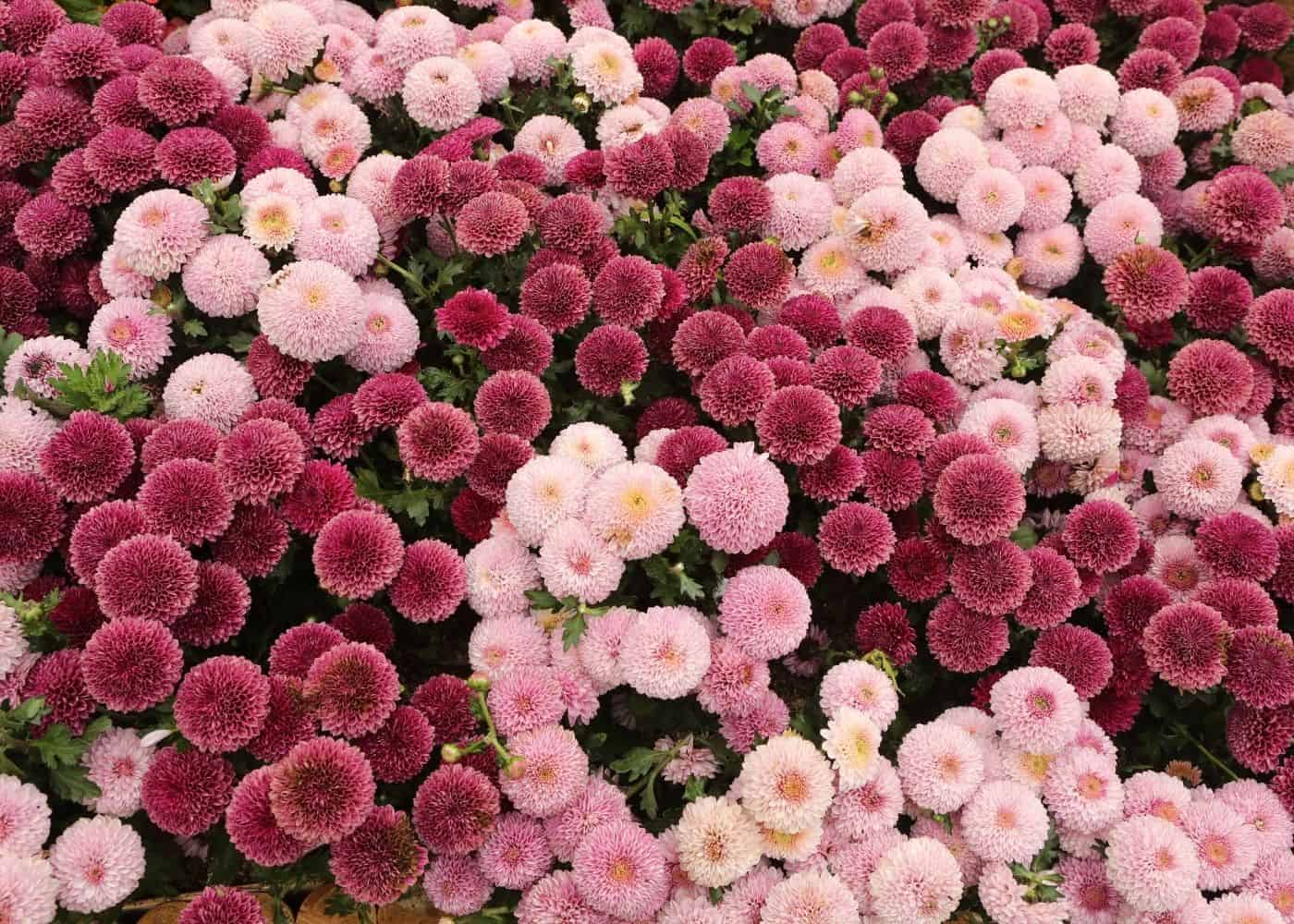
2. Chrysanthemum Small Wonder (Zones 5-9)
Chrysanthemum Small Wonder is a variety of Perennial Mum with deep pink flowers. Plants are quite short, growing 8″-16″ tall and grow about 16″ wide. This variety is moderately cold-hardy, and can be grown in Zones 5-9.
3. Wanda Garden mums (Zones 7-9)
Wanda Garden Mums stand at 12-24″ tall and spread 12-24″ wide. These flowers bloom in the fall, require ample sunlight, and are regularly easy to care for. These flowers are best for hardiness zones 7a, 7b, 8a, 8b, 9a, and 9b. Wanda Garden Mums come in various colors such as red, lavender, bronze, and purple, adding a lovely swathe of color to any garden.
4. Paradiso Garden mums (Zones 7-9)
Paradiso Garden Mums are best for hardiness zones 7-9, making them perfect for areas with warmer winter seasons. Standing at 12-20″ tall and 20-30″ wide at full bloom, these magnificent flowers add wonderful hues of pink, yellow, and white to any garden!
5. Morgana Garden mums (Zones 7-9)
Morgana Garden Mums are best for hardiness zones 7-9 and stand at 12-20″ tall and 20-30″ wide. These flowers come in hues of red, yellow, and purple, making them a wonderful addition to your porch during the fall!
“Some garden strains of hardy mums do make fantastic perennials and are beginning to be offered that way by garden centers, by mail-order nurseris, and at plant sales. Look for varieties like peachy-apricot colored ‘Sheffield’, ‘Venus’ (a lavender single), ‘Meioko’ (a double violet), or Ryan’s Pink’, which forms daisy-like pink flowers that will last nearly until the snow falls.”
Mastering the Art of Flower Gardening: A Gardener’s Guide to Growing Flowers, from Today’s Favorites to Unusual Varieties, by Matt Mattus
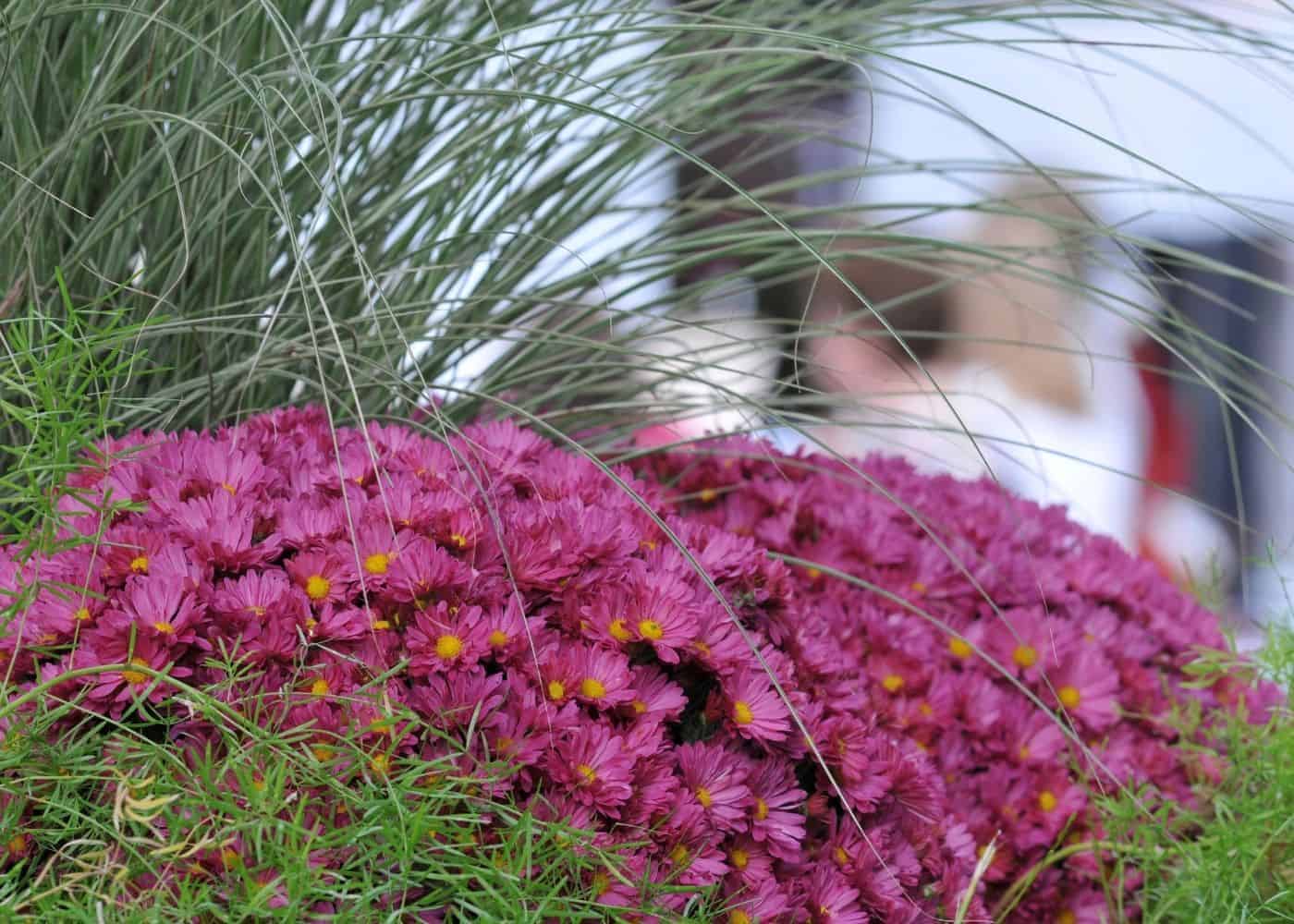
Plant care for perennial mums
Perennial Mums are relatively easy to care for. They generally require at least 6 hours of sunlight with partial afternoon shade preferred in Zones 8-9. Mums need to be watered regularly throughout the year at the base of the plant to ensure the roots receive ample moisture.
Where to plant perennial mums
Plant Perennial Mums in a full-sun location that receives at least 6 hours of sunlight per day during the growing season. Shorter Mums are great in mixed flower border gardens, while taller types (Spider Mums or exhibition football-type plants) are best grown in raised beds or in a dedicated cut flower garden. Gardeners who grow Mums for exhibition tend to grow them in covered polytunnels or greenhouses.
When to plant perennial mums
Perennial mums are best planted in the spring to allow the roots to develop and establish before they bloom in the fall. If you plant your mums in the fall, they will not have enough time to establish roots before the first frost and will most likely not survive winter.
How to pinch perennial mums
Pinching is a fancy word for pruning. Pinching helps mums to grow sturdier and healthier throughout their lifetime. Pinching prevents buds from flowering too early when temperatures become warmer. It also helps plants grow strong sturdy stems on compact plants.
Pinch Perennial Mums in early summer. The general rule of thumb is to pinch back all growing buds before the 4th of July, but not to trim back the plant after that.
To pinch your mums, simply cut back the entire plant to about 6″-8″ tall. Cutting the plant back encourages branches to grow and leads to many more flower buds.
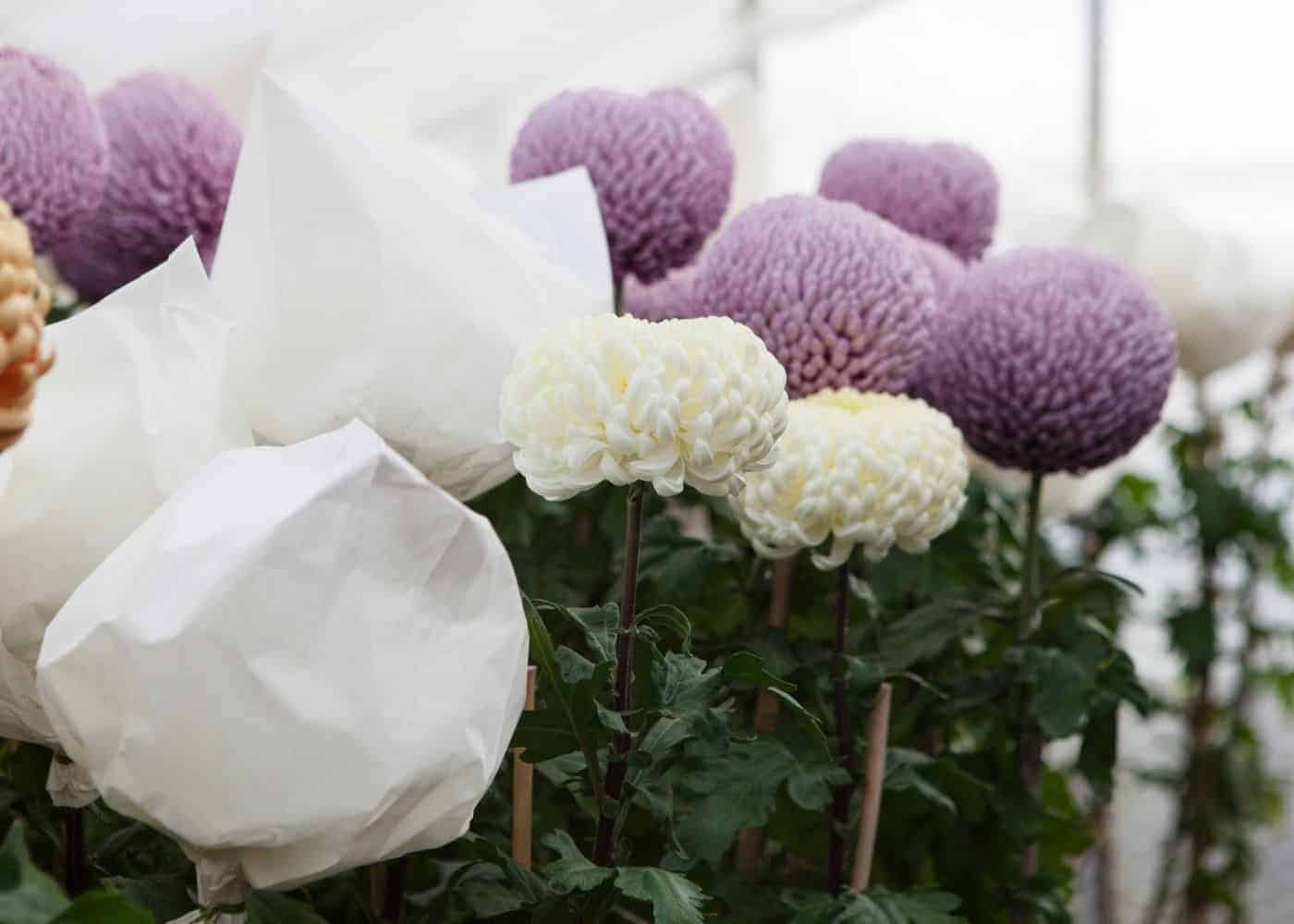
Pests on perennial mum plants
Perennial Mum plants can become targets for garden pest insects, including aphids and caterpillars. Organic insecticides typically work quite well against these pests. Farmer florists and exhibition show gardeners sometimes even tie organza bags over blooms to protect the flowers from hungry pests.
When to divide perennial mums
Perennial mums need to be divided every couple of years to encourage the health and regrowth of the plant. If you do not divide your mums every couple of years, it can stunt their growth, causing the flowers to wilt. Perennial Mums flower best when fresh new roots are able to gather nutrients.
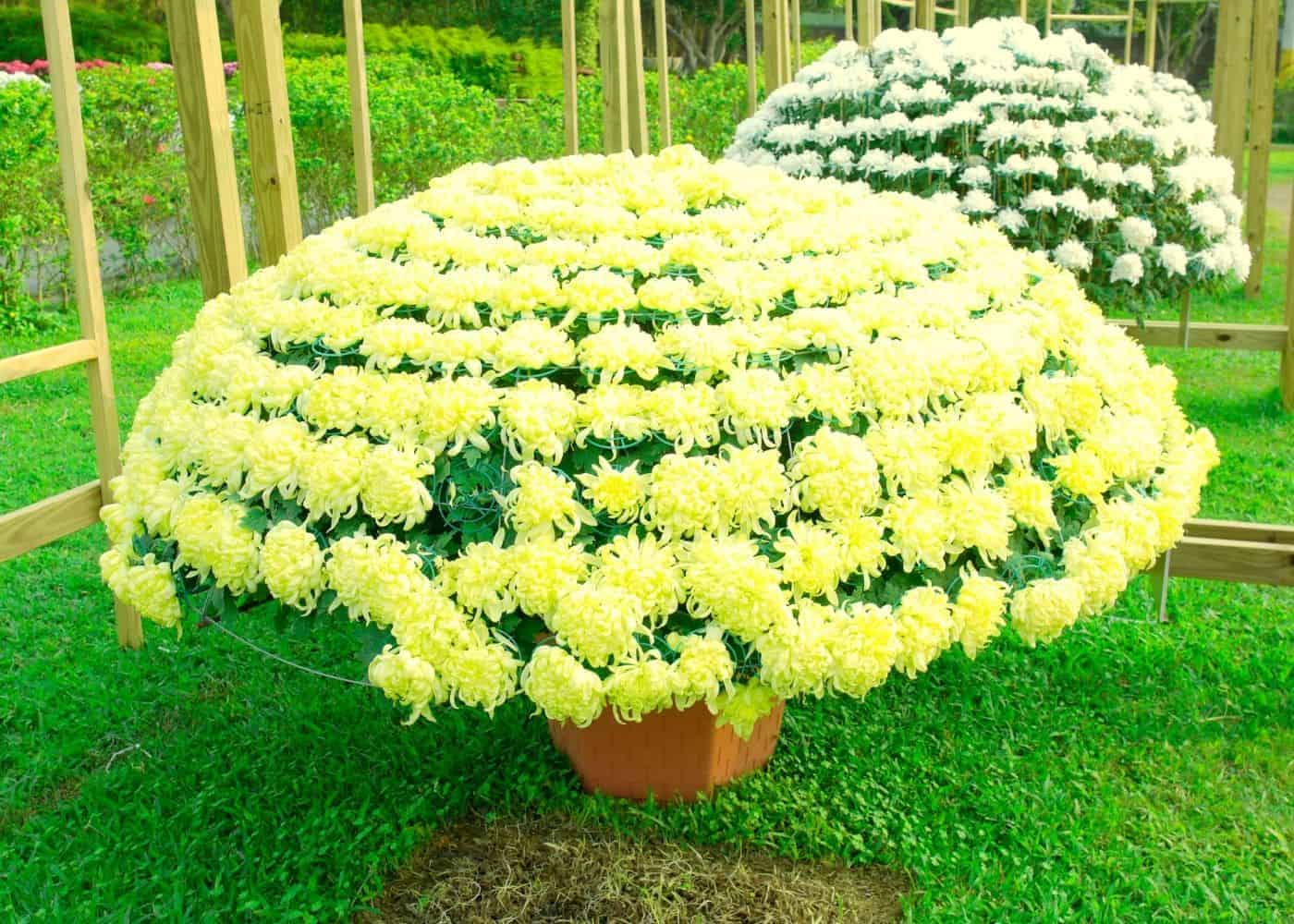
Types of perennial mums
There are 13 different class categories of perennial mums. Every variety falls into one of these categories, including various cultivars of Garden Mums, Florist Mums, Exhibition Show Mums, Japanese Mums, and Korean Mums.
Here are the 13 Categories of Mums:
- Class 1: Irregular Recurve Mums – Large 4″-6″ football mums with inward-curve petals, used in thousand-bloom displays
- Class 2: Reflex Mums – Petals curve downwards creating a feathered sphere shape
- Class 3: Regular Incurve Mums – Florets curve inwards and upwards creating a slightly-spikey ball
- Class 4: Decorative Mums – Traditional round blooms of Hardy Garden Mum plants with upward-curved petals
- Class 5: Intermediate Incurve Mums – Smaller versions of Regular Incurve-type Mums
- Class 6: Pompom Mums – Popular Florist Mums used as cut flowers for bouquets
- Class 7: Single & Semi-Double Mums – Large daisy-like Perennial Mums
- Class 8: Anemone Mums – Flowers have a pincushion-like center surrounded by larger petals
- Class 9: Spoon Mums – Petals open at the ends with a spoon-shaped tip
- Class 10: Quill Mums – Petals are tubular with open quill-like tips
- Class 11: Spider Mums – Long, thin tubular petals that create sunburst-like flowers
- Class 12: Brush & Thistle Mums – Petals are long and tubular with spikey tips
- Class 13: Ususual Mums – Specialty Mums that have characteristics of several other categories
Reference: Mastering the Art of Flower Gardening: A Gardener’s Guide to Growing Flowers, from Today’s Favorites to Unusual Varieties, by Matt Mattus
